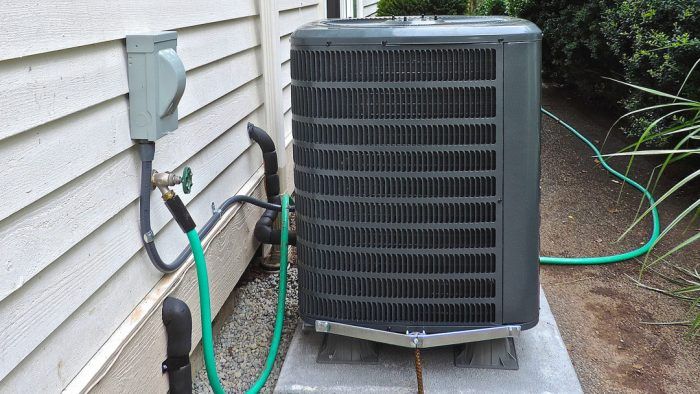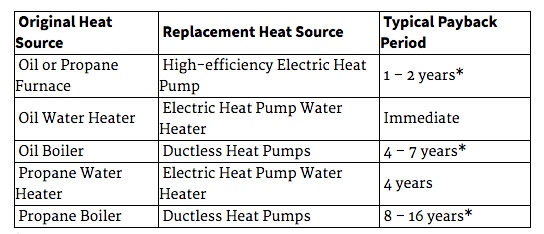Electrification Can Be a Smart Investment
Making the switch from propane or oil to electric heat reduces total energy use and often saves money.

Image Credits: Peter Stevens / Flickr
By Steven Nadel
To achieve the common and ambitious worldwide goal of reducing greenhouse gas emissions 80% or more by 2050, analyses find that consumers and businesses will need to use a combination of energy efficiency and carbon-free electricity (e.g., electricity from renewable resources or nuclear) or low-carbon electricity (efficient fossil fuel use with carbon capture and storage) for transportation, space heating, and water heating (see here and here).
But does electrification save money for homeowners considering making the switch? Our new study, “Energy Savings, Consumer Economics, and Greenhouse Gas Emissions Reductions from Replacing Oil and Propane Furnaces, Boilers, and Water Heaters with Air-Source Heat Pumps,” looks at that particular question.
The report finds that replacing oil and propane furnaces, boilers, and water heaters with high-efficiency electric heat pumps can often reduce total energy use and energy bills and will also reduce emissions in many cases.
Electrification can be a smart investment
When it is time to replace heating or cooling equipment, high-efficiency electric heat pumps or water heaters can often provide an attractive alternative to homeowners looking for a cost-effective solution. In fact, the energy and money saved by installing electric equipment instead of propane- or oil-powered equipment can often make up for the upfront cost in relatively short order, as shown in the following table:

These results are for fully replacing an oil or propane system with heat pumps; partial replacements that leave the existing oil or propane system in place to provide supplementary heat are less financially attractive because the backup system will eventually need to be replaced.
This study complements a prior ACEEE study that found that switching from electric furnaces to heat pumps is often financially attractive to consumers, as is converting from electric baseboard heat to heat pumps in homes with ducts or homes with above-average space heating energy use. On the other hand, another ACEEE study found that the economics of converting gas furnaces to heat pumps are often not compelling to homeowners (e.g., simple payback periods commonly over 10 years, although lower in the deep South). And work by others has identified efficient new homes as another attractive market for heat pumps.
Heat pumps are becoming more popular
Studies generally find that consumers are receptive to heat pumps, but some issues do remain, including comfort at cold temperatures, operating costs, aesthetics, noise, and reliability.
Some early programs to promote heat pumps have met substantial success and others less so. Programs in Maine, Massachusetts, Vermont, and the Northwest have incentivized the purchase of thousands of heat pumps, primarily ductless heat pumps, with the market share of ductless heat pumps now at 13% in the Northwest. The most successful programs tend to provide substantial upstream incentives (to wholesalers) or midstream incentives (to contractors). They also include contractor training and certification so that systems are installed properly.
Recommendations to increase heat-pump usage
States interested in pursuing heat pump programs as a way to support energy savings and emissions reduction goals can take the following steps:
- Offering programs to promote high-efficiency heat pumps to replace less-efficient oil and electric systems, and sometimes propane systems as well. Such efforts can build on successful programs in the Northeast and Northwest. In addition, programs to promote heat pumps in new construction deserve attention.
- Training and education for contractors on proper installation and for homeowners on good applications for use of heat pumps.
- More field monitoring on actual heat pump performance and refining of performance metrics based on this monitoring.
- Additional research on supplemental heat for heat pump replacements in colder climates that could avoid the need to retain a fossil fuel system for supplemental heat during the coldest days.
- Continued work to develop improved cold-climate electric ducted air-source heat pumps and gas-fired heat pumps.
These efforts can increase the market share of high-efficiency heat pumps in attractive applications while better learning what does and doesn’t work in terms of both technologies and programs.
Previously published on GreenBuildingAdvisor.com. Steven Nadel is the executive director of the American Council for an Energy-Efficient Economy. This post was originally published at ACEEE’s website





